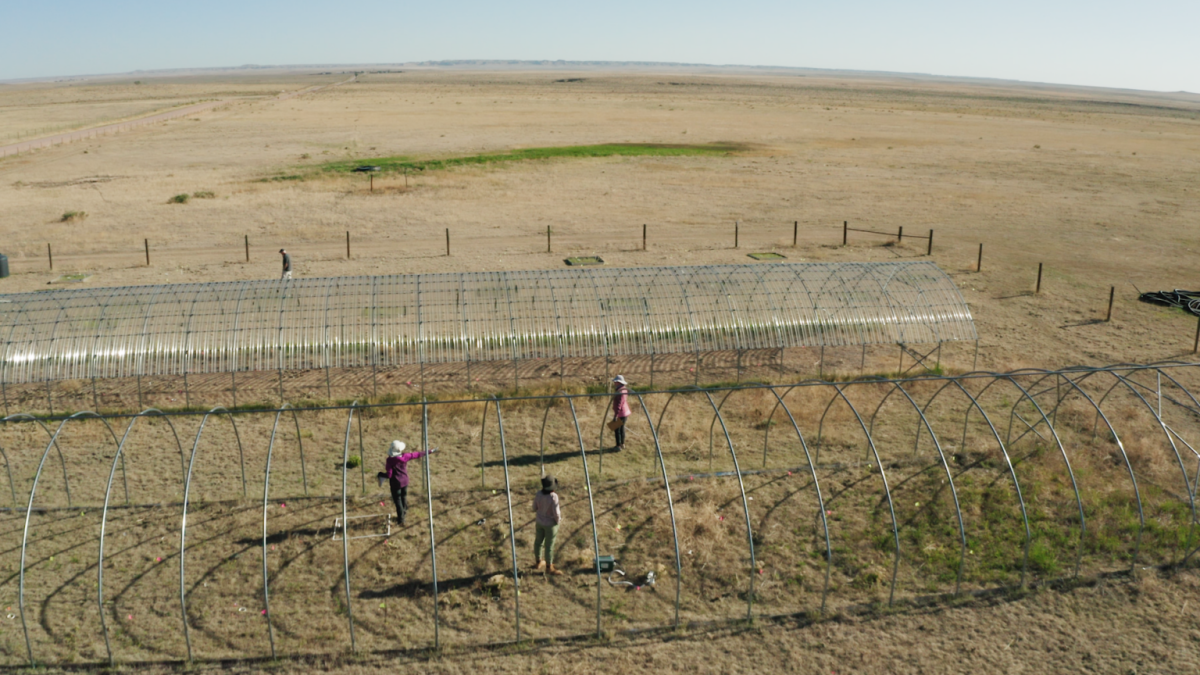Several farmer organizations are urging Canadian National Railway (CN) to reconsider its plans to stop service to 53 producer car loading sites across the Prairies.
A 60-day notice period, required under Transport Canada regulations, ended Sunday with no known offers from farmers to lease the rail sidings where the railway would previously pick up producer cars, CN spokesperson Kelli Svendsen said in an interview Tuesday.
Thus, CN plans to “delist” the sites, meaning the railway will no longer pick up producer cars there.
Producer cars are railway hopper cars that farmers can order to load themselves at a rail siding or producer-loading facility that’s sited closer to home than the nearest grain terminal.
Read Also

Prolonged drought causes unprecedented productivity loss: Study
Colorado State University — Extreme, prolonged drought conditions in grasslands and shrublands would greatly limit the long-term health of crucial…
Depending on a farmer’s location, he or she can save $800 to $1,200 per car in handling and elevation costs, the Canadian Wheat Board said. The National Farmers Union puts that savings figure higher, at between $1,000 and $2,000.
“Sixty days in the middle of our busiest time of the year doesn’t provide adequate time for farmers to organize and look at our options,” said Robert McLean, vice-president of Manitoba farmer group Keystone Agricultural Producers, in a release Tuesday.
The 60 days’ notice regarding such sidings is in “stark contrast” with the legislated three-year discontinuance process involved if a railway wishes to discontinue service on a grain-dependent branch line, KAP noted.
Svendsen said CN hasn’t yet decided whether it will leave the rail sidings where they are with no active maintenance, or simply pull up the sidings for salvage.
KAP said it would urge federal Transport Minister John Baird and Transport Canada to “intervene and ensure that the delisted sidings are not salvaged until this situation can be properly assessed.”
KAP said it understands many of the sites in Manitoba have had “limited use” over the past two years, but would like to make sure farmers in the region have the time and resources to assess whether or not these lines will have value for a community, “even if they are not profitable for CN at the present time.”
No car movements
Specifically, CN’s Svendsen said, about three-quarters of the 53 sidings in question have not been used at all in the last three years, while the remainder have seen less than five cars.
If a farmer phones now to inquire about producer cars at one of the 53 sites, she said, the farmer would be directed to the next closest producer car loading spot.
Among over 120 such sites remaining across the Prairies, she said, there is a site within a 15-mile radius of 35 of the 53 delisted locations. The rest of the delisted locations are within 30 miles of an alternate site, but for one which is just over 30 miles away from an alternate, she said.
The CWB noted that Prairie farmers loaded a record 12,447 producer cars during 2008-09. Increased producer car loadings create more competition in the grain-handling business, the CWB said, and that in turn could lead to increased trucking incentives and lower grain-handling charges.
Svendsen granted that CN has seen a 20 per cent increase in producer car traffic in 2008-09 compared to 2007-08. However, she said, the “vast majority” of that increase has come from a relatively small number of sites.
NFU vice-president Terry Boehm of Allan, Sask., said in a separate release last week that producer car loading sites do not cost the railways anything, since they do not have to actively maintain them.
Though she couldn’t provide a dollar figure, Svendsen said there are costs to inspect and maintain the sidings.
“Meaningful input”
Calling CN’s decision “unacceptable,” Boehm urged Baird to block the delisting of the sites, and also to make legislative changes that would allow “a fair mechanism for farmers to have meaningful input into decisions regarding delisting of producer car loading sites.”
“The end result of delisting these sites is that the railways would no longer be obliged to provide service directly to the farmers, and the line elevator companies would get more business,” Boehm said.
The NFU, in its release last week, listed 52 of the 53 sites to be delisted, including:
- Manitoba: Sprague, Elie, Plumas, Roblin, Makaroff, Oakner, St. Lazare, Brandon, Minitonas
- Saskatchewan: Kelso, Langbank, Odessa, Vibank, Atwater, Allan, Dundurn, Bladworth, Yorkton, Sturgis, Buchanan, Invermay, Wadena, Quill Lake, Tisdale, Harris, Brock, Kindersley, Flaxcombe, Alsask, Leney, Biggar, Scott, Lashburn
- Alberta: Beiseker, Bircham, Burbank, Duhamel, Hotchkiss, Chauvin, Ryley, Claysmore, Mundare, Spirit River, Lamont, Beamer, Egremont, Entwistle, Hythe, Kinuso, Donnelley, Girouxville, Peace River
Svendsen noted the 53rd delisted site is at Paddle River, northwest of Edmonton.
















